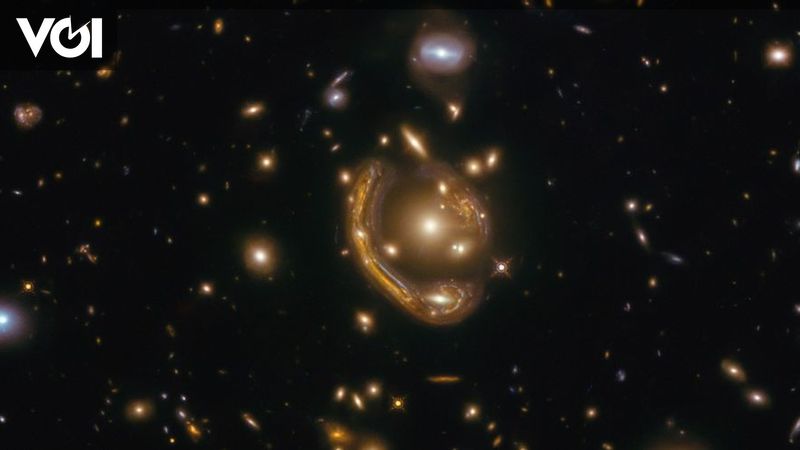JAKARTA – NASA’s Hubble Space Telescope has captured an image of the Einstein Ring a year ago. Thanks to further research, scientists are now able to calculate how old he is and extract more details about this cosmic oddity.
As the name suggests, Albert Einstein was the first to hypothesize that these objects were created by a phenomenon called gravitational lenses. It’s a bit like a curved mirror distorting how an object looks, except, in this case, it’s happening on a much larger scale in space.
The concept is not very technical. When an object with a strong gravitational pull is between the source and the observer, it distorts the light coming from the source and creates an optical illusion for the observer.
In the case of the Einstein Ring, the bending of light creates an optical illusion that manifests in the form of a large ring in outer space. Sometimes, the alignment of a gravitationally distorted body and a light source is so perfect that the source appears much larger than it really is, which allows scientists to study it in greater detail.
The photo above taken by Hubble actually depicts one of the largest and nearly complete Einstein Rings ever seen. The object has been labeled GAL-CLUS 022058s and the light coming from it has actually been magnified by a factor of 20, thanks to gravitational lenses. Due to its appearance, scientists have given it a suitable nickname – Liquid Ring.
Interestingly, the shape of the galaxy described must have existed about 9 billion years ago, and the revived Hubble Space Telescope only sees it now because of the distance from the light source.
After this Hubble-captured image of the Einstein Ring was released, more research followed to unravel the mystery. Scientists created a gravitational lens model to study the effects of this space phenomenon to learn more about the physical characteristics of the galaxy that appears magnified in the image.
Thanks to data collected by the Hubble Space Telescope, scientists determined that light coming from its source had traveled about 9.4 billion light years. This is done by detecting molecular gases and Red Shift (measurement of how long the wavelength of light has been stretched) in this case.
Nikolaus Sulzenauer, a research student at the Max Plank Institute for Radio Astronomy in Germany and also a member of the team behind the study, said the galaxies shown in the Molten Ring are regular galaxies with active star formation.
In addition, galaxies appear to have spiral arms, regions where star formation tends to be active. As for its location, GAL-CLUS 022058s is located in the southern hemisphere constellation called Fornax which contains four stars and translates to furnace in Latin. A quite fitting name for the constellation that holds the object that has the nickname “Liquid Ring”.
– .


